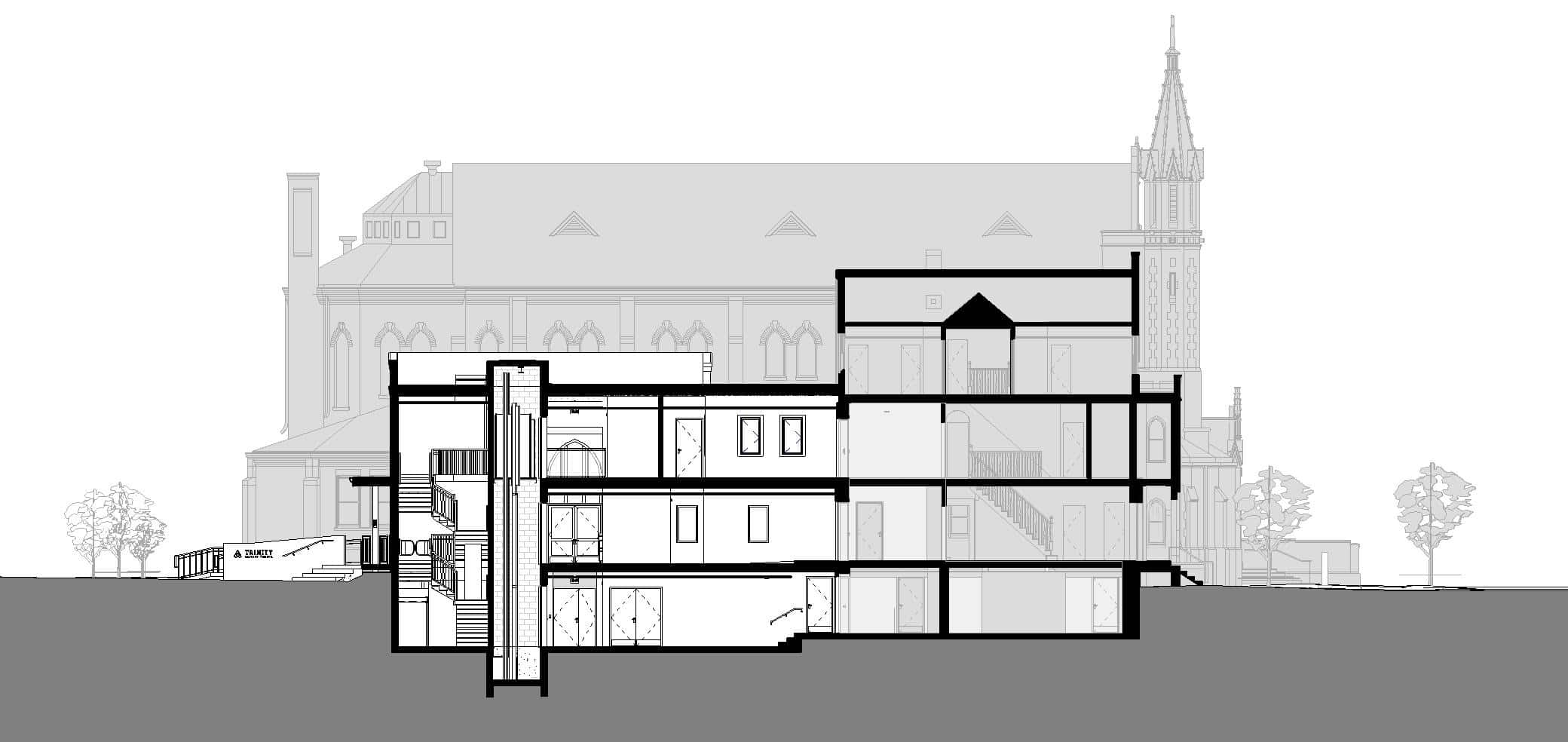Architectural plans and sections serve as the blueprint of design mastery, offering a glimpse into the intricate layers of a building’s spatial organization and structural composition. These essential documents not only convey the vision of the architect but also serve as a roadmap for construction, guiding builders and craftsmen in bringing architectural marvels to life. Join us on an enlightening exploration as we unravel the significance, intricacies, and artistry embedded within architectural plans and sections.

Deciphering Architectural Plans: The Language of Design
- Blueprint of Vision:
Architectural plans are the visual representation of an architect’s vision. These detailed drawings provide a comprehensive overview of a building’s layout, including floor plans, elevations, and annotations that communicate design intent and spatial relationships. - Spatial Organization:
Floor plans delineate the spatial organization of a building, illustrating the arrangement of rooms, corridors, and circulation paths. Each element is meticulously positioned to optimize functionality, flow, and user experience within the built environment. - Scale and Proportion:
Scale and proportion play a crucial role in architectural plans, ensuring that elements are accurately sized and balanced within the overall composition. Dimensions, annotations, and graphical symbols convey the relative size and placement of architectural features with precision and clarity.
Exploring Architectural Sections: Unveiling Layers of Depth
- Cross-Sectional Insights:
Architectural sections offer cross-sectional insights into the vertical composition of a building, revealing its structural framework, spatial hierarchy, and materiality. These drawings cut through the façade to expose interior spaces, structural systems, and design details concealed within. - Structural Integrity:
Sections provide valuable information about a building’s structural integrity and construction methodology. Details such as foundation types, wall assemblies, and roof configurations are meticulously depicted, guiding engineers and contractors in the execution of building elements. - Light, Ventilation, and Acoustics:
Sections shed light on critical aspects of building performance, including natural light penetration, ventilation pathways, and acoustic considerations. By illustrating the interaction between interior and exterior environments, sections inform decisions that optimize occupant comfort and well-being.
Mastering the Artistry: Techniques and Considerations
- Drawing Conventions:
Architectural plans and sections adhere to established drawing conventions and standards, ensuring consistency and clarity across documents. Conventions such as line weights, hatch patterns, and graphic symbols convey information with precision and readability. - Detailing and Annotation:
Detailing and annotation enrich architectural drawings with supplementary information and explanatory notes. Symbols, legends, and callouts provide insights into materials, finishes, and construction methods, enhancing comprehension and facilitating communication among project stakeholders. - Digital Tools and Technologies:
Digital tools and technologies have revolutionized the creation and dissemination of architectural plans and sections. Computer-aided design (CAD) software, Building Information Modeling (BIM), and three-dimensional visualization tools empower architects to explore design iterations, analyze spatial relationships, and communicate concepts with unprecedented efficiency and accuracy.
Significance in Design and Construction: Bridging Vision and Reality
- Communication and Collaboration:
Architectural plans and sections serve as a universal language that facilitates communication and collaboration among architects, engineers, contractors, and clients. These documents bridge the gap between conceptual ideation and practical realization, aligning diverse perspectives towards a shared vision. - Construction Documentation:
Architectural plans and sections form the backbone of construction documentation, providing detailed instructions for builders and craftsmen. From site preparation and foundation work to interior finishes and MEP (Mechanical, Electrical, Plumbing) installations, these drawings guide every phase of the construction process with precision and clarity. - Legal and Regulatory Compliance:
Architectural plans and sections play a crucial role in ensuring legal and regulatory compliance throughout the design and construction process. By adhering to building codes, zoning regulations, and industry standards, architects uphold safety, accessibility, and environmental sustainability in the built environment.
Pushing the Boundaries: Innovations and Future Trends
- Virtual and Augmented Reality:
Virtual and augmented reality technologies are revolutionizing the visualization and communication of architectural plans and sections. Immersive experiences allow stakeholders to explore virtual environments, interact with three-dimensional models, and experience spaces in unprecedented ways. - Parametric Design and Generative Algorithms:
Parametric design and generative algorithms enable architects to explore complex geometries and optimize design solutions based on predefined parameters and constraints. By harnessing computational tools, architects push the boundaries of creativity and innovation in architectural expression. - Sustainable Design Integration:
Sustainable design principles are increasingly integrated into architectural plans and sections, emphasizing energy efficiency, passive design strategies, and environmentally responsible material choices. Concepts such as passive solar design, natural ventilation, and green building certifications shape the future of architecture towards a more sustainable and resilient built environment.
Conclusion: The Blueprint of Design Excellence
As we conclude our journey through the realm of architectural plans and sections, we recognize their profound significance as the blueprint of design excellence. From conveying the architect’s vision to guiding construction execution and fostering collaboration among stakeholders, these documents embody the artistry, precision, and innovation inherent in architectural practice. As architects continue to push the boundaries of creativity and embrace emerging technologies, architectural plans and sections remain timeless artifacts that bridge imagination and reality, shaping the built environment for generations to come.